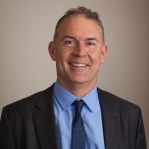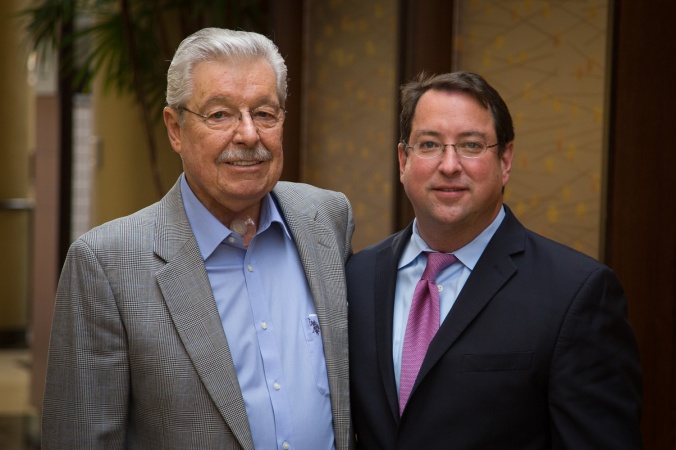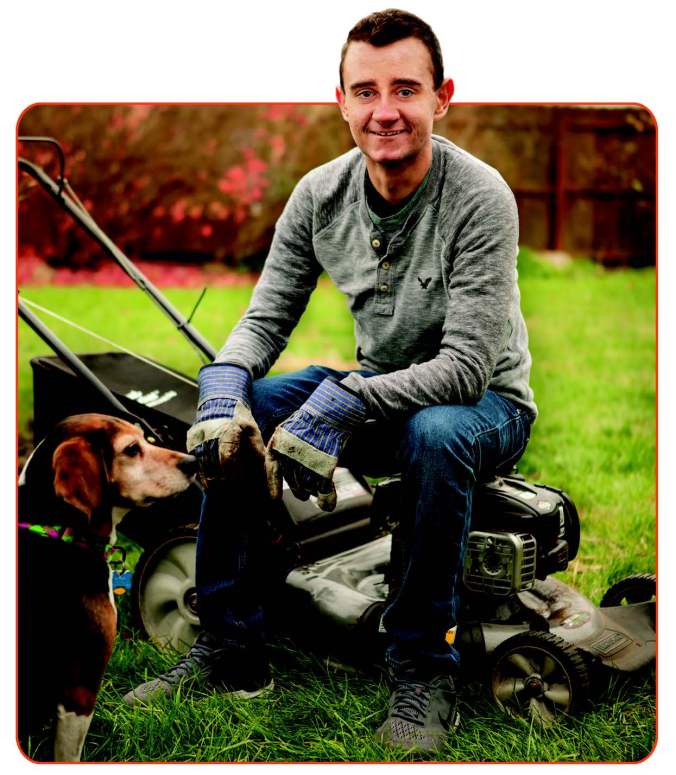From January 8th to 13th, nearly 300 scientists and trainees from around the world ascended the mountains near Lake Tahoe to attend the joint Keystone Symposia on Neurogenesis and Stem Cells at the Resort at Squaw Creek. With record-high snowfall in the area (almost five feet!), attendees had to stay inside to stay warm and dry, and even when we lost power on the third day on the mountain there was no shortage of great science to keep us entertained.

Boy did it snow at the Keystone Conference in Tahoe!
One of the great sessions at the meeting was a workshop chaired by CIRM’s Senior Science Officer, Dr. Kent Fitzgerald, called, “Bridging and Understanding of Basic Science to Enable/Predict Clinical Outcome.” This workshop featured updates from the scientists in charge of three labs currently conducting clinical trials funded and supported by CIRM.
Regenerating injured connections in the spinal cord with neural stem cells

Mark Tuszynski, UCSD
The first was a stunning talk by Dr. Mark from UCSD who is investigating how neural stem cells can help outcomes for those with spinal cord injury. The spinal cord contains nerves that connect your brain to the rest of your body so you can sense and move around in your environment, but in cases of severe injury, these connections are cut and the signal is lost. The most severe of these injuries is a complete transection, which is when all connections have been cut at a given spot, meaning no signal can pass through, just like how no cars could get through if a section of the Golden Gate Bridge was missing. His lab works in animal models of complete spinal cord transections since it is the most challenging to repair.
As Dr. Tuszynski put it, “the adult central nervous system does not spontaneously regenerate [after injury], which is surprising given that it does have its own set of stem cells present throughout.” Their approach to tackle this problem is to put in new stem cells with special growth factors and supportive components to let this process occur.
Just as most patients wouldn’t be able to come in for treatment right away after injury, they don’t start their tests until two weeks after the injury. After that, they inject neural stem cells from either the mouse, rat, or human spinal cord at the injury site and then wait a bit to see if any new connections form. Their group has shown very dramatic increases in both the number of new connections that regenerate from the injury site and extend much further than previous efforts have shown. These connections conduct electrochemical messages as normal neurons do, and over a year later they see no functional decline or tumors forming, which is often a concern when transplanting stem cells that normally like to divide a lot.
While very exciting, he cautions, “this research shows a major opportunity in neural repair that deserves proper study and the best clinical chance to succeed”. He says it requires thorough testing in multiple animal models before going into humans to avoid a case where “a clinical trial fails, not because the biology is wrong, but because the methods need tweaking.”
Everyone needs support – even dying cells
The second great talk was by Dr. Clive Svendsen of Cedars-Sinai Regenerative Medicine Institute on how stem cells might help provide healthy support cells to rescue dying neurons in the brains of patients with neurodegenerative diseases like Amyotrophic Lateral Sclerosis (ALS) and Parkinson’s. Some ALS cases are hereditary and would be candidates for a treatment using gene editing techniques. However, around 90 percent of ALS cases are “sporadic” meaning there is no known genetic cause. Dr. Svendsen explained how in these cases, a stem cell-based approach to at least fix the cellular cause of the disease, would be the best option.
While neurons often capture all the attention in the brain, since they are the cells that actually send messages that underlie our thoughts and behaviors, the Svendsen lab spends a great deal of time thinking about another type of cell that they think will be a powerhouse in the clinic: astrocytes. Astrocytes are often labeled as the support cells of the brain as they are crucial for maintaining a balance of chemicals to keep neurons healthy and functioning. So Dr. Svendsen reasoned that perhaps astrocytes might unlock a new route to treating neurodegenerative diseases where neurons are unhealthy and losing function.
ALS is a devastating disease that starts with early muscle twitches and leads to complete paralysis and death usually within four years, due to the rapid degeneration of motor neurons that are important for movement all over the body. Svendsen’s team found that by getting astrocytes to secrete a special growth factor, called “GDNF”, they could improve the survival of the neurons that normally die in their model of ALS by five to six times.
After testing this out in several animal models, the first FDA-approved trial to test whether astrocytes from fetal tissue can slow spinal motor neuron loss will begin next month! They will be injecting the precursor cells that can make these GDNF-releasing astrocytes into one leg of ALS patients. That way they can compare leg function and track whether the cells and GDNF are enough to slow the disease progression.
Dr. Svendsen shared with us how long it takes to create and test a treatment that is committed to safety and success for its patients. He says,

Clive Svendsen
“We filed in March 2016, submitted the improvements Oct 2016, and we’re starting our first patient in Feb 2017. [One document is over] 4500 pages… to go to the clinic is a lot of work. Without CIRM’s funding and support we wouldn’t have been able to do this. This isn’t easy. But it is doable!”
Improving outcomes in long-term stroke patients in unknown ways

Gary Steinberg
The last speaker for the workshop, Dr. Gary Steinberg, a neurosurgeon at Stanford who is looking to change the lives of patients with severe limitations after having a stroke. The deficits seen after a stroke are thought to be caused by the death of neurons around the area where the stroke occurred, such that whatever functions they were involved with is now impaired. Outcomes can vary for stroke patients depending on how long it takes for them to get to the emergency department, and some people think that there might be a sweet spot for when to start rehabilitative treatments — too late and you might never see dramatic recovery.
But Dr. Steinberg has some evidence that might make those people change their mind. He thinks, “these circuits are not irreversibly damaged. We thought they were but they aren’t… we just need to continue figuring out how to resurrect them.”
He showed stunning videos from his Phase 1/2a clinical trial of several patients who had suffered from a stroke years before walking into his clinic. He tested patients before treatment and showed us videos of their difficulty to perform very basic movements like touching their nose or raising their legs. After carefully injecting into the brain some stem cells taken from donors and then modified to boost their ability to repair damage, he saw a dramatic recovery in some patients as quickly as one day later. A patient who couldn’t lift her leg was holding it up for five whole seconds. She could also touch her arm to her nose, whereas before all she could do was wiggle her thumb. One year later she is even walking, albeit slowly.
He shared another case of a 39 year-old patient who suffered a stroke didn’t want to get married because she felt she’d be embarrassed walking down the aisle, not to mention she couldn’t move her arm. After Dr. Steinberg’s trial, she was able to raise her arm above her head and walk more smoothly, and now, four years later, she is married and recently gave birth to a boy.
But while these studies are incredibly promising, especially for any stroke victims, Dr. Steinberg himself still is not sure exactly how this stem cell treatment works, and the dramatic improvements are not always consistent. He will be continuing his clinical trial to try to better understand what is going on in the injured and recovering brain so he can deliver better care to more patients in the future.
The road to safe and effective therapies using stem cells is long but promising
These were just three of many excellent presentations at the conference, and while these talks involved moving science into human patients for clinical trials, the work described truly stands on the shoulders of all the other research shared at conferences, both present and past. In fact, the reason why scientists gather at conferences is to give one another feedback and to learn from each other to better their own work.
Some of the other exciting talks that are surely laying down the framework for future clinical trials involved research on modeling mini-brains in a dish (so-called cerebral organoids). Researchers like Jürgen Knoblich at the Institute of Molecular Biotechnology in Austria talked about the new ways we can engineer these mini-brains to be more consistent and representative of the real brain. We also heard from really fundamental biology studies trying to understand how one type of cell becomes one vs. another type using the model organism C. elegans (a microscopic, transparent worm) by Dr. Oliver Hobert of Columbia University. Dr. Austin Smith, from the University of Cambridge in the UK, shared the latest about the biology of pluripotent cells that can make any cell type, and Stanford’s Dr. Marius Wernig, one of the meeting’s organizers, told us more of what he’s learned about the road to reprogramming an ordinary skin cell directly into a neuron.
Stay up to date with the latest research on stem cells by continuing to follow this blog and if you’re reading this because you’re considering a stem cell treatment, make sure you find out what’s possible and learn about what to ask by checking out closerlookatstemcells.org.

Samantha Yammine
Samantha Yammine is a science communicator and a PhD candidate in Dr. Derek van der Kooy’s lab at the University of Toronto. You can learn more about Sam and her research on her website.

























